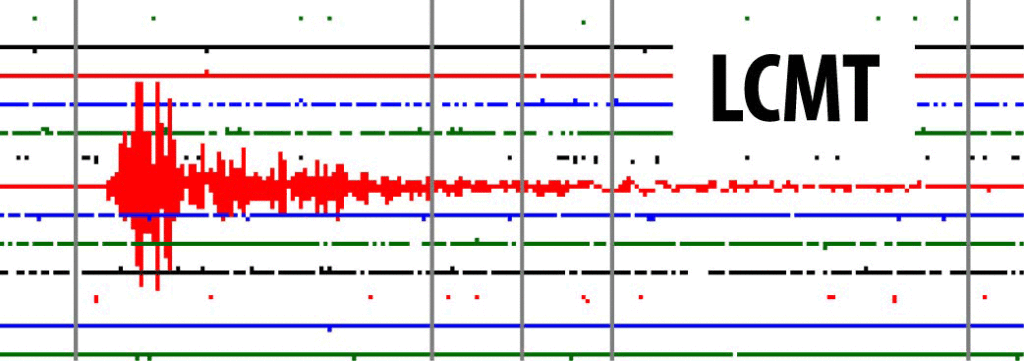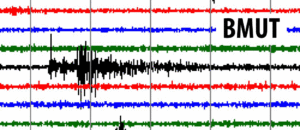Local Earthquakes
Local earthquakes of all sizes are recorded at every station, but may not be large enough to “trigger” our network and allow us to locate them. If an earthquake is very small you may see its recording only on one or two stations. Check the time of the earthquake’s beginning (the origin time) to make sure you are looking at the same earthquake at each station.
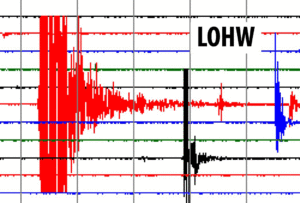
many smaller earthquakes recorded by station
LOHW.
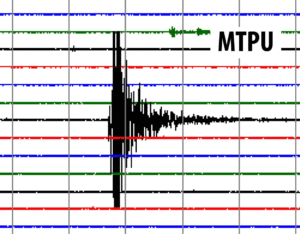
recorded by station MTPU.
Distant Earthquakes
Large "teleseisms" from all over the world may be recorded on all stations. See the list of worldwide earthquakes available at the USGS National Earthquake Information Center. A teleseism is an earthquake which occurred more than 1,000 km from the station it is recorded on.
Example of a teleseism (distant) earthquake
recorded by station LCMT.
Other Signals
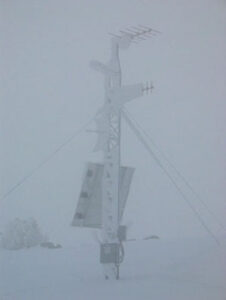 Earthquakes are not the only signals recorded by our very sensitive instruments. Weather can affect the data signals we record; for example, seismic stations can be sensitive to wind (see station NAIU below) and ice build-up (see station GZU below). Wind can lead to elevated ground motion signals over a period of time. During winter months, ice buildup on a station's antenna can cause disruption to the station's telemetry link. Additionally, sometimes the telemetry link between the station and our data center experiences interference. These tend to generate "spikey" signals in the data. We refer to these signals as "noise" because they can hide earthquake signals. Noise can also be generated by vehicles passing or wildlife and livestock walking by.
Earthquakes are not the only signals recorded by our very sensitive instruments. Weather can affect the data signals we record; for example, seismic stations can be sensitive to wind (see station NAIU below) and ice build-up (see station GZU below). Wind can lead to elevated ground motion signals over a period of time. During winter months, ice buildup on a station's antenna can cause disruption to the station's telemetry link. Additionally, sometimes the telemetry link between the station and our data center experiences interference. These tend to generate "spikey" signals in the data. We refer to these signals as "noise" because they can hide earthquake signals. Noise can also be generated by vehicles passing or wildlife and livestock walking by.
^Ice buildup on a seismic station's solar
panel and antenna. Ice on the antenna resulted
in telemetry noise in the seismogram.
Eventually the station lost power, as the battery
was not being recharged by the ice-covered solar panel.
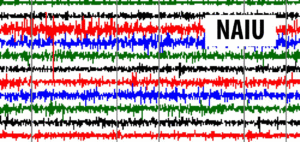
noise on station NAIU (Antelope Island, UT).

noise can be caused by ice buildup on the
station's antenna or interference in the
telemetry link.

